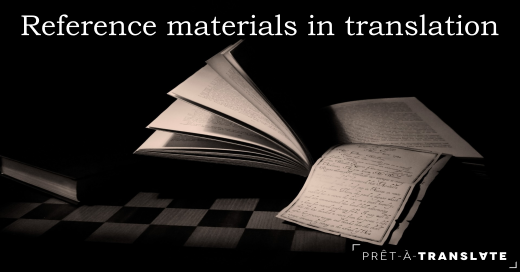
Reference materials in translation
And working as a team with my clients
The Prêt-à-translate office is small. I never hold meetings with my clients at my office, mainly because most of them are foreign companies.
They’re in Germany, the United States, France, Portugal and the UK in their large offices with loads of workstations, meeting rooms and table football. I’m in Torremolinos, Malaga, with a computer, two screens and my dogs looking in at me from the garden.
However, I’ve always said that distance doesn’t stop me feeling part of a team.
I love when, in between the never-ending list of tasks and last-minute deadlines, we share our weekend plans, photos of our pets or interesting facts about our languages and cultures. It’s like chatting with a colleague while you’re waiting for the kettle to boil in the office kitchen.
Feeling part of your client’s team makes problems seem less of an issue and everyone is much more motivated about finding a solution.
However, a good relationship with your clients isn’t just about at having a bit of a banter (although that’s great), it also ensures that our translation projects run smoothly.
In translation, communicating with your client and reference materials are essential for projects to succeed. This communication should be present at all project stages, such as the revision stage, but today, I’m going to focus on reference materials.
If you’re a company that needs translation services, this blog post will help you make the translator’s work easier and improve the end text’s quality.
What reference materials can you provide?
I like to make a distinction between two different types of reference materials: language-related and context-related.
Language-related material includes glossaries, style guides and previous translations. If there are previous translations, I always ask the client if I can use them or if I should ignore them because they were not satisfied with them.
Glossaries also include untranslated terms or terms that the client has always used in a certain way. Although these terms may not be 100% correct, we need to be flexible. If the client has always used a certain term and its company is known for its terminology, we shouldn’t let our pride get the better of us and correct the client on something that they do not want to correct (and that doesn’t necessarily need correcting).
Context-related reference materials are any other information in addition to the language-related elements: e.g. catalogues, video tutorials, product presentations and, for software files, information about what each chain is. For example, a certain feature, dropdown menu, placeholders (which are changed for names or the product version), or an image’s alternative text on a website. Dear programmers: please don’t hide this information when you send code files for localization 🙏.
Context-related reference materials could also be information about the target audience, their culture, their knowledge of the client’s products and services or the translation’s purpose.
The context can help the translator decide how to approach the translation.

Translating a text for a website, which aims to inform or persuade, is not the same as translating a text that is going to be posted on social media and is designed to entertain, be funny or cause a reaction, or a blog post, which intends to be informative. What’s more, something that’s funny in one culture, may not be in another.
When should translators ask for reference materials?
The answer is easy: as soon as possible.
Ideally, we should have any reference materials before we get down to work so we can read through them and see how they are going to affect the translation. But that’s in an ideal world and things don’t always turn out like that!
Sometimes a text may seem easy to start with but gets more complicated as we are working on it, and that’s when we’ll ask for more references. For example:
- The text includes prices in a foreign currency. We’ll ask, “Are there prices in our currency?”
- There are links to sections of the client’s website that don’t exist in our language version. We’ll ask, “Should I keep those links in the translation?”
- The client’s customer service number and opening times are for the call centre in New York. We’ll ask, “Does the client have a specific service for our country?” and “What are the opening times?”
Many of these aspects are usually included in a style guide, but sometimes the company doesn’t have such a document or it may even be based on the source language and fails to consider the consequences it can have on localizing a product to another country and culture.
As you can see, working as part of a team is fundamental for translations to be successful; your relationship with the translator should not just be limited to sending and receiving files!
I hope this blog post has helped you understand what we translators need to do a good job and how you can help us.
See you for the next post!
